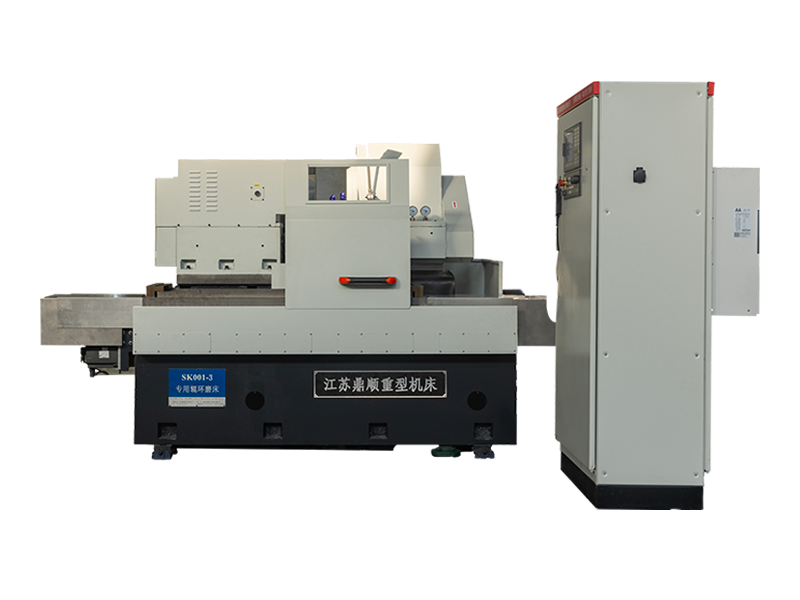A CNC roll ring grinder is a specialized grinding machine designed for processing roll rings used in steel rolling mills and other heavy-duty industrial applications. Roll rings are critical components in wire rod mills, bar mills, and section mills, where they guide and shape metal during the rolling process. To achieve high precision, extended service life, and consistent performance, roll rings must be ground with accuracy and repeatability. CNC-controlled grinders provide the technology to meet these requirements, enabling efficient processing of various types of roll rings.
1. Tungsten Carbide Roll Rings
One of the most common materials processed on CNC roll ring grinders is tungsten carbide. These roll rings are known for their exceptional hardness, wear resistance, and ability to withstand high rolling forces.
- Applications: Wire rod rolling, small section mills, and high-speed bar production.
- Grinding Needs: Precise surface finish and accurate geometry to maintain consistent product dimensions.
- Advantages of CNC Grinding: Ensures tight tolerances and uniform profiles, extending the lifespan of tungsten carbide roll rings.
2. High-Speed Steel (HSS) Roll Rings
HSS roll rings are valued for their toughness and heat resistance. They are often used in applications where both strength and machinability are required.
- Applications: Rolling processes where impact resistance is critical.
- Grinding Needs: Controlled grinding parameters to prevent overheating and maintain metallurgical integrity.
- CNC Benefits: Allows for precise temperature control, consistent surface quality, and reduced risk of cracking.
3. Cast Iron Roll Rings
Though less common in high-performance applications, cast iron roll rings are still used in certain rolling mill operations due to their cost-effectiveness and ease of machining.
- Applications: Lower-speed rolling mills and less demanding operations.
- Grinding Needs: Accurate grinding for dimensional consistency and smooth surfaces.
- CNC Benefits: Automated controls reduce variability, ensuring repeatable quality for large batch production.
4. Composite Roll Rings
Composite roll rings combine different materials to optimize performance, such as a hard outer layer bonded to a more ductile core.
- Applications: Situations requiring both wear resistance and shock absorption.
- Grinding Needs: High precision to maintain balanced structure and avoid delamination.
- CNC Benefits: Advanced control systems ensure stable grinding across varying material properties.

5. Ceramic-Coated Roll Rings
Some modern roll rings feature ceramic coatings to improve wear resistance and extend service life in harsh environments.
- Applications: High-speed, high-friction rolling conditions.
- Grinding Needs: Extremely fine grinding to achieve smooth, defect-free surfaces without damaging the coating.
- CNC Benefits: Micro-precision grinding capabilities ensure optimal surface finish while preserving the coating integrity.
Why CNC Roll Ring Grinders Are Essential
CNC roll ring grinders can handle a wide variety of roll ring materials due to their advanced features:
- Automated Control: CNC technology allows consistent grinding with minimal operator intervention.
- High Precision: Ensures tight dimensional tolerances, critical for rolling performance.
- Flexibility: Adapts to different ring sizes, profiles, and materials.
- Improved Productivity: Faster setup, shorter cycle times, and repeatable accuracy reduce downtime in rolling mills.
Conclusion
A CNC roll ring grinder is capable of processing multiple types of roll rings, including tungsten carbide, high-speed steel, cast iron, composite, and ceramic-coated rings. Each material comes with unique grinding requirements, but CNC technology ensures the necessary precision, consistency, and efficiency to meet industrial demands. By accommodating diverse roll ring types, CNC grinders play a vital role in maintaining the quality and productivity of modern rolling mill operations.

